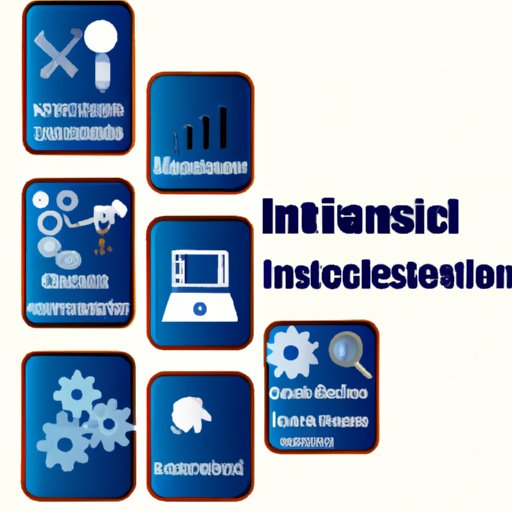Introduction
Computer information science is a rapidly growing field that involves the study of computers and their applications in various areas, such as software engineering, artificial intelligence, and data analytics. It focuses on developing technologies to improve the efficiency and effectiveness of computers in performing tasks. This article explores the fundamentals of computer information science, career opportunities, the benefits of pursuing a degree in the field, advances in technology, and teaching strategies.
Explaining the Fundamentals of Computer Information Science
Computer information science is an interdisciplinary field that combines elements of mathematics, engineering, and computer science. It focuses on using computer technology to solve problems in different fields. The primary goal of computer information science is to develop systems and algorithms that can efficiently process and store data. It also involves the design and development of new software and hardware solutions.
Computer information science uses a variety of technologies, such as databases, networks, operating systems, programming languages, and artificial intelligence. Common applications include web development, game development, mobile application development, data mining, machine learning, and natural language processing.
Career Opportunities in Computer Information Science
The field of computer information science offers a wide range of job roles, from software engineers and data analysts to system administrators and network architects. Many employers seek individuals with expertise in computer information science for positions in research and development, IT support, product development, and technical writing. There are also opportunities for those with a background in the field to pursue a career in academia.
The job outlook for computer information science is positive, with many opportunities available in both the private and public sectors. According to the Bureau of Labor Statistics, employment of computer and information research scientists is projected to grow 15 percent from 2019 to 2029, much faster than the average for all occupations.
Salary potential for computer information science professionals varies depending on experience and educational background. According to PayScale, the median annual salary for computer information science professionals is $82,000.

The Benefits of Pursuing a Degree in Computer Information Science
Pursuing a degree in computer information science can provide many benefits. Students will develop a range of technical skills, from programming and database management to networking and system administration. In addition, they will gain valuable problem-solving and critical thinking abilities, as well as an understanding of current trends and best practices in the field.
A degree in computer information science can also expand a student’s professional network. They will have the opportunity to interact with industry leaders and build relationships with potential employers. Additionally, they will have access to internships and other opportunities that can help them gain experience and advance their careers.

Advances in Computer Information Science
Advances in computer information science are transforming the way people interact with technology. Artificial intelligence (AI) and machine learning are being used to automate tasks and make decisions based on data. Big data is being used to uncover valuable insights from large datasets. These technologies are enabling organizations to become more efficient and profitable.

Exploring the Future of Computer Information Science
The future of computer information science looks bright. Autonomous systems, such as self-driving cars and drones, are becoming increasingly common. Cloud computing is making it easier for businesses to store and manage data. And the Internet of Things (IoT) is connecting devices and systems in ways never before possible.
Teaching Strategies for Computer Information Science
When teaching computer information science, instructors should use interactive techniques to engage students and promote active learning. Incorporating hands-on activities and projects can help students gain a better understanding of the concepts being taught. Additionally, integrating real-world examples can help illustrate how the principles of computer information science are applied in the workplace.
Conclusion
Computer information science is a rapidly growing field that combines elements of mathematics, engineering, and computer science. It focuses on developing technologies to improve the efficiency and effectiveness of computers in performing tasks. The field offers a wide range of job roles, with a positive job outlook and high potential salary. Pursuing a degree in computer information science can provide many benefits, including the development of technical skills and enhanced problem-solving and critical thinking abilities. Advances in the field, such as AI, machine learning, and big data, are transforming the way people interact with technology. Finally, instructors should use interactive techniques and incorporate hands-on activities when teaching computer information science.
(Note: Is this article not meeting your expectations? Do you have knowledge or insights to share? Unlock new opportunities and expand your reach by joining our authors team. Click Registration to join us and share your expertise with our readers.)
